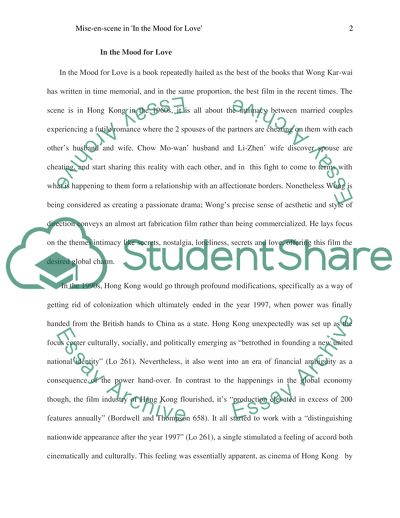Cite this document
(Mise-en-scene in 'In the Mood for Love' Essay Example | Topics and Well Written Essays - 1750 words, n.d.)
Mise-en-scene in 'In the Mood for Love' Essay Example | Topics and Well Written Essays - 1750 words. Retrieved from https://studentshare.org/visual-arts-film-studies/1827626-mise-en-scene-in-in-the-mood-for-love
Mise-en-scene in 'In the Mood for Love' Essay Example | Topics and Well Written Essays - 1750 words. Retrieved from https://studentshare.org/visual-arts-film-studies/1827626-mise-en-scene-in-in-the-mood-for-love
(Mise-En-Scene in 'In the Mood for Love' Essay Example | Topics and Well Written Essays - 1750 Words)
Mise-En-Scene in 'In the Mood for Love' Essay Example | Topics and Well Written Essays - 1750 Words. https://studentshare.org/visual-arts-film-studies/1827626-mise-en-scene-in-in-the-mood-for-love.
Mise-En-Scene in 'In the Mood for Love' Essay Example | Topics and Well Written Essays - 1750 Words. https://studentshare.org/visual-arts-film-studies/1827626-mise-en-scene-in-in-the-mood-for-love.
“Mise-En-Scene in 'In the Mood for Love' Essay Example | Topics and Well Written Essays - 1750 Words”. https://studentshare.org/visual-arts-film-studies/1827626-mise-en-scene-in-in-the-mood-for-love.


